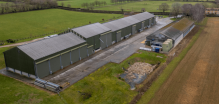URLLC (ultra-reliable low latency communications) has been identified as one of the three main usage scenarios for 5G due to its ability to transmit data, within a few milliseconds or less, with high reliability. The 3rd Generation Partnership Project (3GPP) has standardized the first version of URLLC solutions as part of the Rel-15 New Radio (NR) work.
In the first trial, Nokia and ABB demonstrated how URLLC technology can be applied to protection applications in medium-voltage distribution networks. It is of the utmost importance that severe faults are cleared immediately to keep the distribution network running, guaranteeing the safety of personnel and avoiding damage to equipment. The trial confirmed that 5G/URLLC fulfils latency requirements set by protection applications.
In the second trial, Nokia and Kalmar successfully demonstrated the ability of URLLC technology to advance container yard automation. Reliable and low-latency messages are required, for example, in safety related messages.
“Managing power distribution networks with an increasing amount of distributed energy resources and an increasing need of flexibility requires advanced technology for protection, control and monitoring. The 5G URLLC technology provides an affordable communication platform for deployment of these advanced technologies. The results of the WIVE project are encouraging for future utility-scale implementation of 5G,” said Petri Hovila, Program Manager at ABB.
Automation research Director Pekka Yli-Paunu from Kalmar, part of Cargotec, said, “Network slicing in 5G networks brings a higher level of predictability and control for our safety-related applications. 5G connections should work at the same level of reliability, latency, and bandwidth as cables, and its management should be simple enough.”
Mikko Uusitalo, Head of wireless advanced technologies research at Nokia, said, “Industry collaboration is essential in fostering innovation around 5G and for enabling different industries to take full advantage of the promises of 5G, especially the low latency combined with high reliability. The WIVE project has provided us with greater insight into the requirements and opportunities for experimentation to test our solutions. In this project, Nokia created concepts of how to make 5G URLLC possible and implemented some of these technologies as a prototype that has been tested. It is great to see the solutions moving towards reality.”
The WIVE project is co-funded by Business Finland and involves several industry research units and academic partners such as Nokia, Teleste, Telia, ABB, Kalmar, the Finnish Broadcasting Company (YLE), Digital, regulator FICORA, key Finnish universities as well as VTT Technical Research Centre of Finland.


















